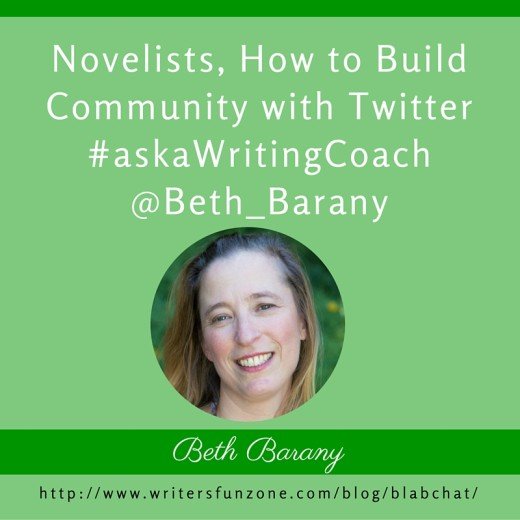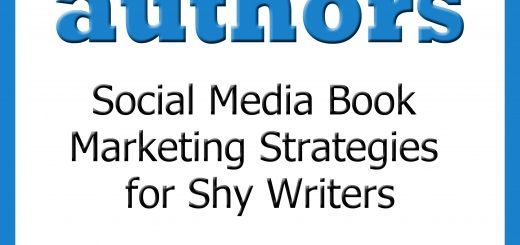When Writers Tweet: 4 Tips for Finding and Regaining Your Twitter Groove
by Guest author, Caroline Jaffe-Pickett
 If you had told me that I would ever have been named one of 39 writers to follow on Twitter, and had an excerpt from my novel in progress reprinted on a leading blog, and gained over 1,000 followers, I would have tweeted, “huh?” leaving me 134 characters left for further self-denial and shock.
If you had told me that I would ever have been named one of 39 writers to follow on Twitter, and had an excerpt from my novel in progress reprinted on a leading blog, and gained over 1,000 followers, I would have tweeted, “huh?” leaving me 134 characters left for further self-denial and shock.
I confess, I was one of those Twitter early non-adapters. It wasn’t so much that I didn’t like Twitter, but I really didn’t see the point. Every time I tweeted, I felt like no one cared, and vice-versa. What did I care what other people had eaten for breakfast? I had like 10 followers, for the longest time. This was something of a blow to my writing ego. I had, after all, published fiction, nonfiction, and poetry. I had won contests, and read out loud, at respectable places like libraries and schools, and for up to an hour — a lot longer then 140 characters’ worth. How long does it take to recite one tweet?
My first few months of tweeting were pretty pathetic. I tried to be clever, and didn’t even impress myself. I tried quotes from famous authors and realized that was so not original. I had read about being authentic, but if I had to try to be authentic, wasn’t that, well, disingenuous?
I tried joining in on other Twitter conversations, and I was ignored –the kiss of death in social media. The real life analogy isn’t so great either. It’s like people walking away from you at a party. Not good. I tried Tweetdeck and it crashed my system. I wanted to try Seismic Desktop, but given my previous “crash,” the name intimidated me. Tweetlater changed to “Social Oomph,” and I just couldn’t handle that at all. And what was “follow Friday,” anyway? Was I supposed to find someone I liked and follow them around town? What if they saw me?
After a while, something changed, and not a moment too soon, as I was going nowhere fast in Twitterland. First, I started observing more, and learning about what others in the twittersphere were retreeting or reblogging in my topic area, which was writers, books, fiction, and the like.
Then I decided to be more strategic. I knew that engagement was key, so I devoted several weeks carefully choosing those I wanted to follow, and I developed criteria for both following and finding followers. And what about my blog? Maybe connecting the feed to Twitter would be good. I was growing a pretty good following on Facebook, so I decided to link my Twitter and Facebook, and that gave me a broader community to connect with. I had started making videos and really enjoyed that, so why not tweet the YouTube links?
I learned the importance of interactivity, and answered every direct message I got. I also learned to handle dipping into conversations differently, by adding a fresh angle or thought to the dialogue. Once I saw that wasn’t so easy to be relevant, it got easier.
Finally, I learned to “free my monkey mind” — the random thoughts I had when driving on the highway, or waiting on line at Safeway, or weird things I overheard. There were “mini-marketing” lessons going on in my head that were crying out to be shared, and nifty people I met in my everyday life were suddenly viable and publishable. I learned that it was OK to loosen up a little — it wouldn’t confuse my brand.
Cool things started to happen. Fellow writer Sharon Hurley Hall, named me one of 39 writers to follow. Other social media “influencers” were suddenly following me, like Chris Brogan and Darren Rouse from Problogger.
 I was writing a creative piece inspired by the “Balloon Boy” incident. As an experiment, I tweeted it in sentences for about 10 days. Elizabeth Searle, a great writer and past acquaintance from Oberlin College, discovered it, and reposted it on her “Celebrities in Disgrace,” blog, based on her novella, and soon a movie. Good experiment.
I was writing a creative piece inspired by the “Balloon Boy” incident. As an experiment, I tweeted it in sentences for about 10 days. Elizabeth Searle, a great writer and past acquaintance from Oberlin College, discovered it, and reposted it on her “Celebrities in Disgrace,” blog, based on her novella, and soon a movie. Good experiment.
I had been struggling with a topic for my first e-book, but ironically, Twitter (of all things!) saved me. I combined my best Twitter blog posts with experiences such as the “Balloon Boy” reprint, and voila. It’s not perfect, but it’s done, an important lesson for writers as well.
The 4 tips again:
1. Observe More
2. Think Strategically
3. Be Interactive
4. Free Your Monkey Mind
Have you found your voice on Twitter? What’s your story?
Caroline Jaffe-Pickett (carrie@carriefreelance.com) is an award-winning writer, editor, and communications consultant focusing on blogs, e-newsletters, and social media. Please join her at www.carriewriterblog.com, her website, www.carriefreelance.com, or follow on Twitter, of course, @carriewriter. Her new free e-book, “6 Degrees of Twitteration,” is available here http://www.docstoc.com/docs/25366373/6-degrees-of-twitteration.







Hi Caroline–
I’m glad to see your wonderful Balloon Boy post story here–
it’s on display on the StarLit. page of my blog and I’m proud to have it.
I agree that Twitter really can lead to writing adventures and unexpected literary
connections like ours, all worth learning to Tweet into the forest–
Thanks, Caroline–
Elizabeth